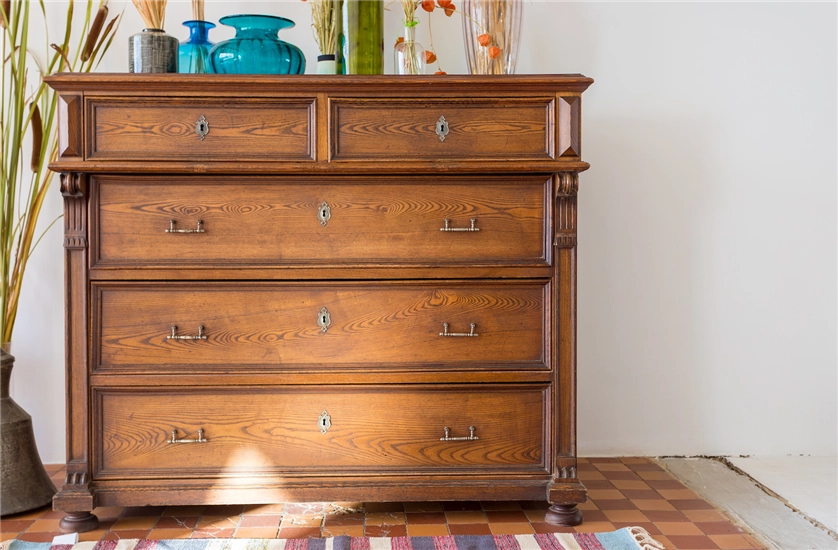
Antique wooden furniture holds timeless charm, telling stories through design, craftsmanship, and — most importantly — the wood it’s made from. Whether you’re restoring a cherished heirloom or investing in period pieces, being able to identify the type of wood used helps you understand its quality, value, and care needs.
In this guide, we’ll walk you through the most common types of wood found in antique furniture and how to recognise them.
To identify wood accurately, look for:
A strong, durable hardwood with prominent grain.
Look for: Light to medium brown colour, coarse texture, heavy weight.
Used in: Edwardian and Arts & Crafts pieces.
Known for its rich colour and smooth grain, especially in 18th-century British furniture.
Look for: Deep reddish-brown hues, fine grain, medium-to-heavy weight.
Note: Often used in Georgian and Victorian-era furniture.
A dark, elegant wood with straight or wavy grain.
Look for: Smooth surface, deep brown tones, natural sheen.
Popular in: Baroque and early 18th-century pieces.
Reddish-brown and darkens with age.
Look for: Flame-like grain, warm tones, fine texture.
Tip: A scratch test may show a dark mark on cherry wood.
Exotic and dense, used in high-end pieces.
Look for: Rich reddish to dark brown hues, strong scent, smooth feel.
Variants: Brazilian (darker, rarer) and East Indian (lighter, striking grain).
Moisture-resistant and durable.
Look for: Golden to dark brown tones, oily feel, straight grain with occasional streaks.
Common in: Colonial-era furniture.
Tough and pale wood often used in drawer construction or American antiques.
Look for: Creamy or yellowish tone, fine and consistent grain, very hard surface.
Pale to medium brown with bold, straight grain.
Look for: Visible texture and occasional streaks or knots.
Lightweight yet strong.
Similar to maple but softer.
Look for: Subtle flame or curly grain, pale tones.
Often used in Scandinavian or early 20th-century furniture.
Tough and durable with a distinctive wavy grain.
Look for: Interlocking or swirling patterns, medium brown hue, noticeable lustre when polished.
A softwood commonly used in rustic or country-style furniture.
Look for: Light colour, straight grain, knotty character, and fresh scent.
Often waxed or painted in older pieces.
If you’re unsure about the wood type — especially when prepping for restoration, refinishing, or French polishing — consult a professional. Misidentifying the wood can lead to poor finish choices or value loss.
Understanding the wood behind your antique furniture brings appreciation, insight, and helps ensure the right care. Whether it’s the strength of oak, the richness of rosewood, or the charm of pine, every wood tells its own story.
If you’re planning to refinish, restore, or modernise antique furniture, J&D Sprayers & Makeovers can help identify the wood and recommend the best finishing techniques — from traditional restoration to flawless spray painting.
📞 Contact us today to discuss your piece!